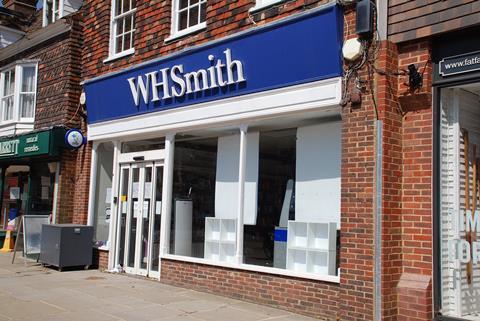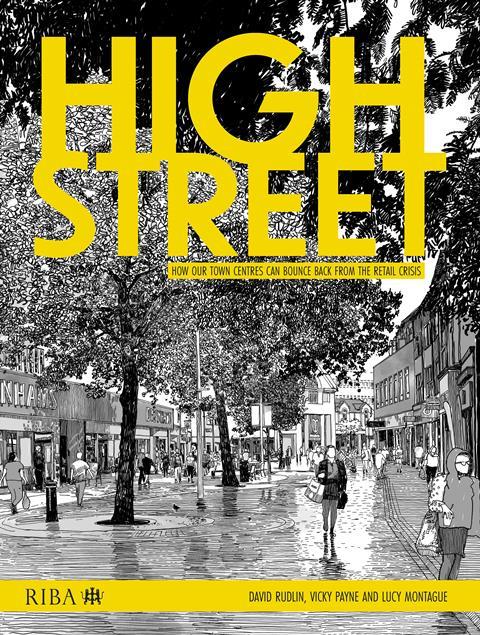David Rudlin reflects on his previously optimistic assessment of the high street’s future in light of WH Smith’s retreat from town centres and new data on retail closures, asking whether the so-called ‘perma-crisis’ signals a deeper, more permanent shift

As WH Smith announces the closure of all its high street stores, data from the Centre for Retail Research suggests that the crisis on the high street is far from over.
It is now a year and a half since Lucy Montague, Vicky Payne and I published our book High Street with its essentially optimistic message: ‘Big Retail’ may be suffering, but high streets will be OK. Independent businesses, leisure and service uses will fill the gap left by the large retailers, and high streets will bounce back into something more distinctive, authentic and community-based.
In a sense, the WH Smith story plays into this narrative – another big retailer failing to innovate and invest. The only time I have been in one of their high street stores recently was just before Christmas. The store was one of the few points of activity on a half-shuttered high street in a small North Wales town, and I needed wrapping paper. On the one hand, I couldn’t see the point of WH Smith – it didn’t do anything that other retailers aren’t doing cheaper and better – but on the other hand, I couldn’t see how this particular high street could do without it.
It is not the first time since our book was published that I have doubted the optimism of our message. Sure, affluent, middle-class centres are regenerating themselves as we predicted, but there are places all over the country that continue to really struggle.
One of the things we enjoyed in writing the book was the origin stories of major retailers – the 1950s Bradford market stall that grew into Morrisons, the Nottingham herbal medicine store that became Boots. But WH Smith is the oldest of them all, having been established as a news vendor on Little Grosvenor Street in 1792.

The original Mr Smith was content with the one store, but the next generation had much grander ideas, opening a branch at the new Euston Station and then riding the great expansion of railways to open branches at stations all over the country. This has always been their main business – of their current 1,700 stores, 1,200 are in stations and airports, accounting for 85% of their retail profits.
When we were doing our research into the crisis on the high street, we would look out for the annual figures from the Centre for Retail Research. Each Christmas, they would dampen the festive mood by publishing data about retail closures and job losses. It was generally pretty grim reading, with job losses rising from 117,000 in 2018 to a peak of 220,000 in 2020.
In our final edit of the book, we were hopeful that things were starting to get better – and indeed, in 2023, job losses fell to just under 120,000 (which is still a lot). But the new data for 2024 shows job losses jumping sharply to almost 170,000.
The Centre for Retail Research calls this a ‘perma-crisis’ that shows no sign of abating. Indeed, rather than a crisis (of which there have been many in the history of retailing), we may be facing a permanent structural change in town and city centres to which we will need to adjust.
The situation is still extremely fragile, and in many places, complete collapse is still possible
Thirty-eight major retailers collapsed last year, including Homebase, The Body Shop, Lloyds Pharmacy, Carpetright and Ted Baker. However, most of the job losses in the major retailers came through rationalisation.
In the book, we quote analysts who predicted that, while it used to be a rule of thumb that a retailer needed 400–500 stores to cover the length and breadth of the UK, with online sales they could now get away with 80–100. Most of the job losses are a result of retailers culling their unprofitable stores – and it doesn’t bode well for centres like my North Wales town.
As part of the research, we analysed data from Experian that showed the worst-hit places tended to be large towns ranked outside the top 100 retail centres. The cities were mostly OK, and the smaller towns that were never reliant on multiple retailers were also doing well. But the medium-sized places were really suffering.
The other message from the Centre for Retail Research is also worrying. Of the 13,500 store closures last year, 11,300 were independents. Independents are not immune from the pressures of retailing. However, unlike the multiples, the independent retail sector is self-replenishing – every year, at least as many new stores open as there are store closures. It’s a sobering thought – independents may be the saviour of the high street, but this is achieved on the back of tens of thousands of failed businesses.
So, as my nameless North Wales town illustrates, announcements about the death of the high street may be premature – but that doesn’t mean job done. The situation is still extremely fragile, and in many places, complete collapse is still possible.
>> Also read: Why is it so difficult to build a high street?
>> Also read: What record shops can teach the high street
Review | High Street: How our town centres can bounce back from the retail crisis

In this review of High Street: How Our Town Centres Can Bounce Back from the Retail Crisis by David Rudlin, Vicky Payne, and Lucy Montague, Jennie Savage examines the book’s argument that independent businesses and new uses can revitalise town centres, questioning whether this vision holds up against ongoing retail closures and economic challenges.
Read the review here.
Postscript
David Rudlin is director of Urban Design at BDP and visiting professor at Manchester School of Architecture.
He is a co-author of High Street: How our town centres can bounce back from the retail crisis, published by RIBA Publishing.
















1 Readers' comment